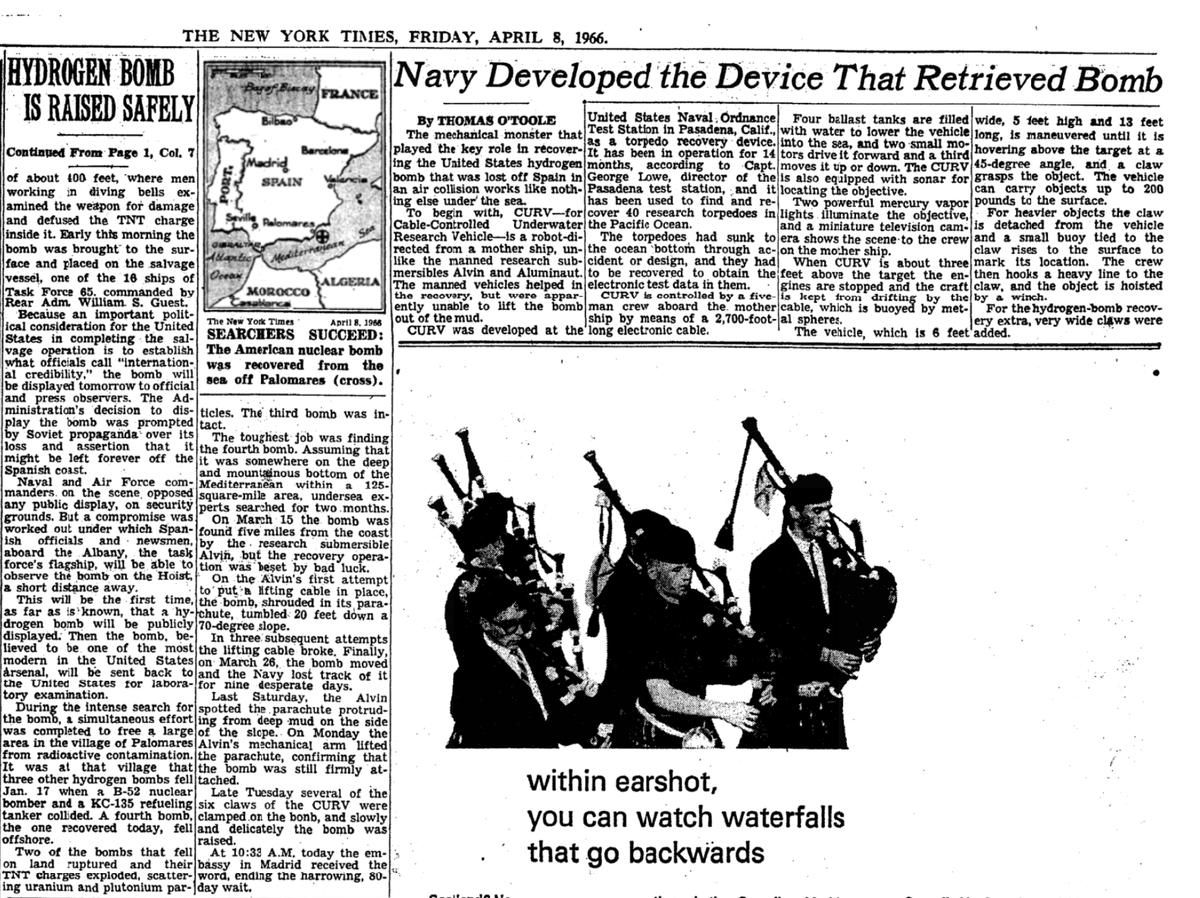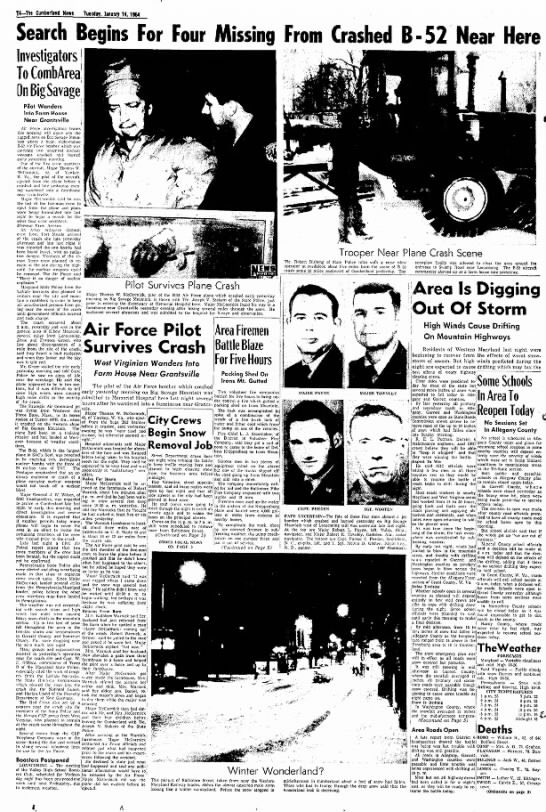
This morning in 1966 over Palomares, Spain, a B-52G bomber on airborne alert collided with a KC-135 tanker during a routine high-altitude refueling operation, killing all 4 tanker crew members and 3 of the B-52’s crew, and causing 4 1.45-Megaton B28 H-bombs to fall to earth. 

Conventional high explosives in two of the three bombs that hit land detonated on impact, contaminating local tomato fields with plutonium. US troops dug up 1,400 tons of radioactive soil and vegetation, which was buried in an AEC dump in South Carolina. But we didn't get it all. 



Decades later, many USAF veterans involved in that cleanup effort are suffering and dying from a variety of ailments they link to being ordered to clean up the radioactive debris in Palomares without any protection. They seek recognition and medical care. nytimes.com/video/us/10000…
On Dec. 6, 2019, an appeals court granted class action status to some of the USAF veterans suing the Department of Veterans Affairs to demand coverage of their medical care for radiation-induced illnesses. But many of the 1,600 involved had already died. nytimes.com/2020/02/11/us/…
On September 2, 2020, the court accepted new evidence on behalf of the class, including a declaration by a former Strategic Air Command medical officer, Dr. Murray Watnick, that approximately 10 kilograms of plutonium-239 was released at Palomares. counterpunch.org/2020/12/18/air…
The fourth bomb fell into the Mediterranean Sea 12 miles off the coast and sank to a depth of 2,550 feet. It was lost for 80 days, creating a huge public relations problem for the United States and spurring a massive underwater search effort leading to its retrieval on April 7. 

To try and allay public fears during the long search, US Ambassador to Spain Angier Biddle Duke (at left in second photo) took a highly-publicized dip in the Mediterranean off Palomares on March 8, 1966. Afterward, he declared to reporters, “If this is radioactivity, I love it!” 



Once the missing bomb was recovered from the seafloor (the Navy submersible USS Alvin located it and it was retrieved by the unmanned torpedo recovery vehicle CURV-1), it was shown to the press aboard the USS Petrel, the first time a US hydrogen bomb had been publicly displayed. 

Left to right: Sr. Don Antonio Velilla Manteca, chief of Spain's Nuclear Energy Board in Palomares, Brig. Gen. Arturo Montel Touzet, Spain's search & recovery coordinator, Rear Adm. William S. Guest, Cmdr US Navy Task Force 65, and Maj. Gen. Delmar E. Wilson, Cmdr 16th Air Force.
Here’s a color photograph from the opposite angle of the long-submerged B28 thermonuclear bomb aboard the USS Petrel, with the CURV in the background. The bomb’s nose was severely dented and it had two ~40-inch-long gashes in its tail section. Water had infiltrated all sections. 

Here is how the New York Times reported the closely-watched recovery of the lost thermonuclear bomb on April 8 and 9, 1966 (erroneously reporting its yield as 20 Megatons): 







• • •
Missing some Tweet in this thread? You can try to
force a refresh


















